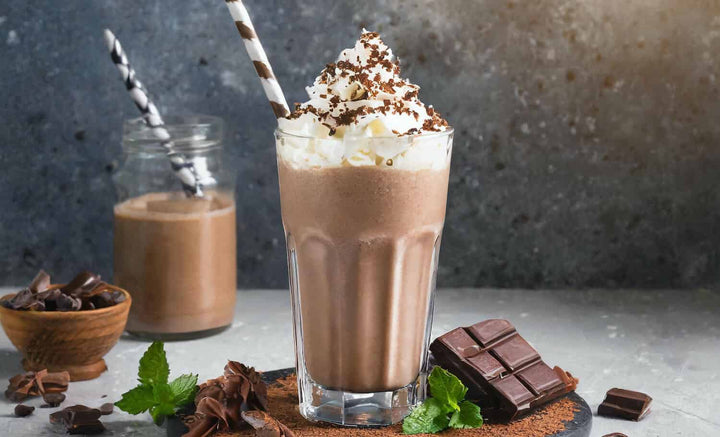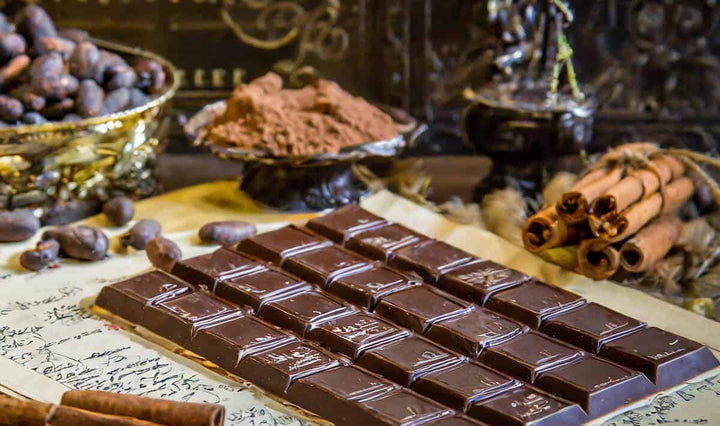Discover the colourful journey of Easter eggs: from ancient pagan symbols of spring to today's chocolate delights.
Unwrap the history behind this beloved Easter tradition!
In this post, we explore the fascinating journey of the Easter egg, from its ancient origins to its modern-day incarnations.
The History of Easter Eggs
Easter eggs, in their various forms, have been a symbol of rebirth and renewal since ancient times, long before they were adopted by Christian traditions to represent the resurrection of Jesus Christ.
Initially, eggs were dyed, exchanged and eaten as part of pagan festivals celebrating spring.
Their symbolism was rooted in the natural world, representing new life and the rebirth of the land after the cold, barren winter months.
With the advent of Christianity, these practices were gradually incorporated into the celebration of Easter, aligning the egg with the resurrection of Christ and the promise of eternal life.
Over time, Easter eggs evolved from simple dyed or painted eggs to more elaborate creations.
In the 17th and 18th centuries, artificial eggs made of various materials began to appear.
By the 19th century, the tradition of giving chocolate eggs had taken hold, thanks in part to advancements in chocolate production.
Today, Easter eggs come in countless forms, from chocolate confections to intricately decorated works of art.
They are a staple of Easter celebrations in many countries, each bringing its own cultural influences to the tradition.

What is the History of Chocolate Easter Eggs?
The history of chocolate Easter eggs is a delightful blend of tradition, innovation, and cultural adaptation.
Tracing its origins back to the early 19th century, this sweet Easter treat has evolved considerably from its humble beginnings.
-
Early Beginnings of Easter Eggs: The concept of the Easter egg itself predates chocolate versions by centuries. Originally, eggs were used in pagan festivals to celebrate spring and were later adopted by Christians as a symbol of the resurrection of Jesus Christ. These eggs were typically dyed or painted.
-
19th Century: The Birth of Chocolate Eggs: The history of chocolate Easter eggs begins in the 19th century, particularly in Europe. The first chocolate eggs were solid and somewhat crude, as the techniques for working with chocolate were still in their infancy.
-
Advancements in Chocolate Making: The evolution of chocolate Easter eggs was significantly influenced by advancements in the chocolate industry. In the mid-19th century, the development of new processes made chocolate more malleable and easier to mould. This allowed chocolatiers to create hollow eggs, which quickly gained popularity.
-
Victorian Era: Popularity and Commercialisation: In the Victorian era, the gifting of chocolate Easter eggs became more popular and commercialised. These eggs were often elaborately decorated and considered luxury items.
-
20th Century and Beyond: Throughout the 20th century, chocolate Easter eggs continued to evolve. They became more accessible to the general public, and the variety expanded. The introduction of mass production techniques allowed for a wide range of sizes, designs, and fillings.
-
Modern-Day Variations: Today, chocolate Easter eggs are a staple of Easter celebrations in many countries. They range from inexpensive, foil-wrapped options to high-end, artisanal creations. Other Easter-themed chocolates and sweets now accompany many.
So, the history of chocolate Easter eggs is a testament to the fusion of tradition with culinary innovation.
From symbolic religious artefacts to beloved sweet treats, they have become integral to Easter festivities worldwide.
What is the History of Egg Rolling?
The tradition of egg rolling, a popular Easter activity, has a rich and varied history that spans several cultures and centuries.
It's a custom where children and adults roll hard-boiled eggs down a hill or a sloping surface.
The origins and evolution of egg rolling are as intriguing as the activity.
-
Ancient Origins: Egg rolling, in its most basic form, likely has pre-Christian or pagan origins. Eggs have long been a symbol of new life and rebirth, fitting themes for springtime celebrations in various ancient cultures.
-
Christian Adoption and Easter Connection: As Christianity spread, many pagan customs were absorbed and adapted, with egg rolling becoming part of the Easter tradition. It was seen to symbolise the rolling away of the stone from Jesus Christ's tomb.
-
European Traditions: The practice of egg rolling on Easter was popularised in various European countries, each adding its unique twist. For instance, egg rolling has been a long tradition in the United Kingdom, especially in England and Scotland.
-
Egg Rolling in the United States: The most famous egg rolling event today is the White House Easter Egg Roll in Washington, D.C. This tradition dates back to 1878 when President Rutherford B. Hayes officially opened the White House grounds to local children for egg rolling on Easter Monday.
-
Modern Celebrations and Variations: Today, egg rolling is a festive Easter activity enjoyed in various parts of the world. Modern celebrations sometimes include competitions, with prizes for the eggs that roll the farthest or survive the course intact.
-
Cultural Significance: Beyond the fun and competition, egg rolling events often serve as community gatherings, bringing people together to celebrate a shared tradition that signifies renewal and the coming of spring.
Egg rolling is a custom steeped in history, symbolising new beginnings and the joy of the Easter season.
Its journey from an ancient pagan ritual to a cherished modern-day Easter activity highlights cultural traditions' enduring appeal and adaptability.

What is the History of Pace Eggs?
The history of Pace Eggs, a distinctive element of traditional Easter celebrations in the UK, particularly in Lancashire and the North of England, is steeped in local tradition and folklore.
"Pace" comes from the Old English word "Pascha", meaning Easter, reflecting the eggs' close association with the Easter festival.
-
Ancient Origins and Christian Adoption: Like many Easter traditions, the origins of Pace Eggs can be traced back to pagan times when eggs were symbols of fertility and rebirth in spring festivals. With the advent of Christianity, these symbols were adapted to represent the resurrection of Jesus Christ.
-
Medieval Times: The tradition of Pace Eggs is believed to have gained prominence in mediaeval England. During this period, the church would bless and distribute eggs to the congregation after Easter Mass. These eggs were hard-boiled and often dyed in various colours, with red being particularly popular as it represented the blood of Christ.
-
The Tradition of Egg Dyeing: The distinctive feature of Pace Eggs is their vibrant colouration, traditionally achieved using natural dyes. Onion skins, beetroot, and other plant materials were commonly used, resulting in various colours, from deep golds and browns to rich reds and purples.
-
Pace Egg Plays: The tradition extends beyond the eggs to the 'Pace Egg Plays', a traditional folk theatre performed around Easter. These plays typically involve dramatised combat between characters such as St George and the Turkish Knight, symbolising the victory of good over evil.
-
Victorian Era to Present Day: In the Victorian era, with the rise of commercial food dyes, the colouring of Pace Eggs became even more vibrant. Today, while the tradition of making Pace Eggs has waned in many areas, it survives in some parts of the UK, where it's celebrated with egg rolling competitions and local festivities.
-
Cultural Significance: Pace Eggs represent a fascinating blend of pagan and Christian traditions, reflecting the historical evolution of Easter celebrations. They symbolise religious themes, the communal spirit, and the rich tapestry of local customs in the UK.
In essence, Pace Eggs are a colourful and historic part of Easter traditions in the UK, embodying centuries of cultural and religious evolution.
Their enduring presence highlights the significance of local customs in celebrating universal themes of renewal and rebirth.
Where Can You Buy Tasty Chocolate for Easter?
For a delightful selection of Easter treats, Whitakers Chocolates is your go-to destination.
We offer everything from adorable bunny gift boxes filled with milk chocolates to Easter-themed chocolate bars and from baby pink love hearts to luxurious Easter-themed chocolate truffle gift boxes.
If you're seeking alternatives to traditional Easter eggs, Whitakers provides a mouth-watering array of options.
Some Notes From an Expert Chocolatier
As an expert chocolatier, I've always been fascinated by the role of chocolate in marking the year's most joyous occasions.
It's a unique pleasure to see how chocolate transforms into a medium of celebration, especially during Easter.
From the smoothest truffles to the most intricate Easter eggs, crafting each piece is like weaving a tapestry of happiness and tradition.
The versatility and richness of chocolate allow us to create not just confections, but cherished memories, making it a central part of life's sweetest moments.
Final Notes On Easter Eggs History
The history of Easter eggs is a captivating journey through time and culture.
From their roots as pagan symbols of spring and renewal to their adoption by Christian traditions symbolising the resurrection, Easter eggs have evolved into a multifaceted celebration emblem.
Today, they are not just a religious icon but a universal symbol of new beginnings and joy.
Whether it's the simple charm of a painted hard-boiled egg or the luxury of a rich chocolate creation, Easter eggs hold a special place in people's hearts worldwide.
This enduring tradition beautifully illustrates how a simple object can weave together strands of history, culture, and communal spirit, enriching our celebrations and creating lasting memories.











